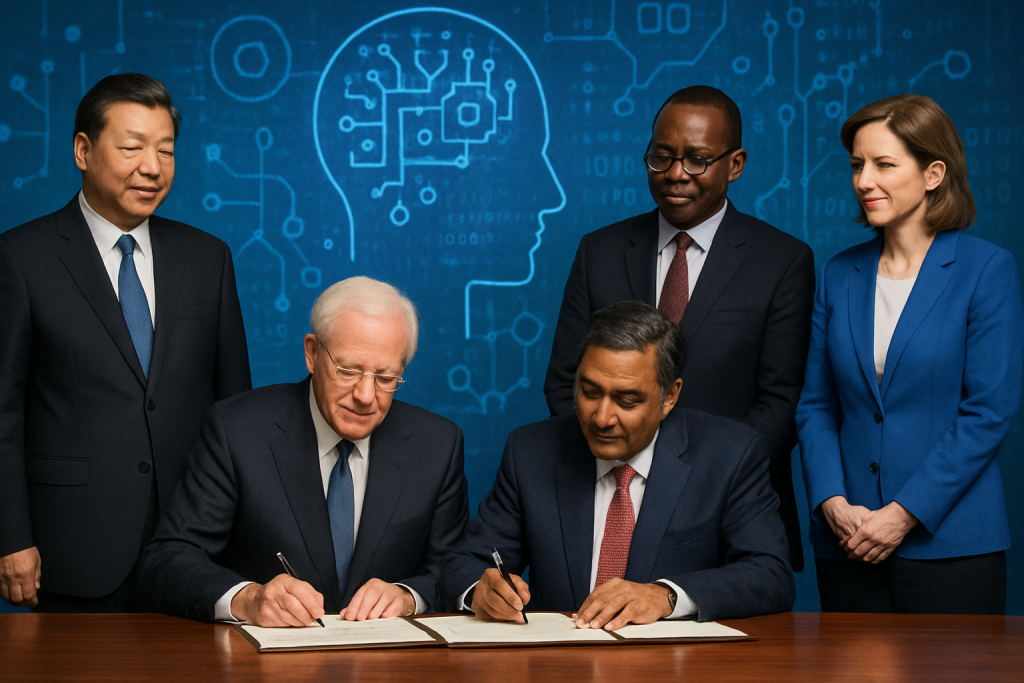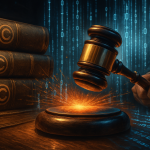Hold on to your hats, folks, because September 6, 2025, just became a pivotal date in the history of artificial intelligence. Remember all those late-night sci-fi movie marathons, the ones where robots either saved the world or enslaved humanity? Well, reality is starting to catch up, and the Council of Europe just dropped a bombshell: the first legally binding international treaty on AI, the AI Convention, is officially open for signing. That’s right, 57 countries, including the United States, the United Kingdom, and the entire European Union, are potentially about to agree on the rules of the AI game.
Think of it as the AI equivalent of the Geneva Convention, but instead of protecting prisoners of war, it’s aiming to protect us from, well, ourselves. Or rather, from the unintended consequences of our rapidly advancing digital creations. It’s a big deal. A really big deal.
But how did we get here? It wasn’t overnight, that’s for sure.
The road to the AI Convention has been paved with years of debate, discussion, and more than a few existential crises. Remember back in the early 2020s, when AI image generators were churning out increasingly realistic (and sometimes disturbingly weird) images? Or when chatbots started convincingly impersonating real people? It was fun and games until someone realized that these technologies could be used for all sorts of nefarious purposes, from spreading disinformation to manipulating elections. It was like watching a real-life version of “Westworld” unfold, only instead of rogue robots, it was rogue algorithms.
The development of the AI Convention, culminating in its adoption in May 2025, represents a collective global effort to reign in the Wild West of AI development. It’s a tacit acknowledgement that AI, while holding immense potential for good, also poses significant risks to human rights, public safety, and democratic institutions. It’s like finally admitting that maybe, just maybe, Skynet isn’t such a far-fetched idea after all (though hopefully, we’re catching it early enough to avoid a full-blown robot uprising).
So, what exactly does this AI Convention entail? What are the key provisions that are supposed to keep us safe from the digital overlords?
At its core, the AI Convention is all about human rights. It’s about ensuring that AI systems are developed and deployed in a way that respects fundamental freedoms and doesn’t trample all over our individual liberties. Think transparency, accountability, and oversight. The treaty aims to establish clear guidelines for how AI systems should be designed, tested, and used, particularly in areas that could impact public safety, like law enforcement, healthcare, and education. It’s about making sure that AI isn’t a black box, making decisions that affect our lives without any human input or understanding.
Imagine, for example, an AI-powered hiring tool that consistently discriminates against certain demographic groups. Or an AI-driven facial recognition system that disproportionately misidentifies people of color. The AI Convention seeks to prevent these kinds of scenarios by requiring developers to build AI systems that are fair, unbiased, and transparent. It’s about baking ethical considerations into the very DNA of AI, rather than treating them as an afterthought.
But it’s not just about preventing harm. The AI Convention also encourages international cooperation in monitoring and addressing AI-related challenges. It recognizes that AI is a global phenomenon, and that no single country can effectively regulate it alone. It’s about sharing best practices, coordinating research efforts, and working together to develop common standards and norms. Think of it as the Avengers assembling to fight the AI threat, only instead of superheroes, it’s government officials and policy wonks.
The significance of this treaty cannot be overstated. It represents a landmark in global AI regulation, marking the first time that multiple nations have agreed to a binding framework governing the development and use of AI technologies. It’s a signal to the world that AI is not just another tech fad, but a transformative force that requires careful management and oversight. By providing a common set of standards, the AI Convention aims to mitigate the risks associated with AI while fostering innovation that aligns with shared ethical principles. It’s about striking a balance between progress and protection, ensuring that AI benefits humanity as a whole, rather than just a select few.
Of course, signing the treaty is just the first step. The real work begins now, as participating countries begin the process of ratification and implementation. This will involve aligning national policies and regulations with the treaty’s provisions, as well as establishing mechanisms for ongoing collaboration and compliance monitoring. It’s going to be a long and complex process, filled with challenges and compromises. But it’s a necessary process, if we want to ensure that AI is used for good, and not for evil.
The success of the AI Convention will ultimately depend on the commitment of signatory nations to uphold its standards and work together to address the evolving challenges posed by AI technologies. It’s a test of our collective will, a test of our ability to cooperate and collaborate in the face of unprecedented technological change. It’s a test of whether we can learn from the mistakes of the past, and create a future where AI serves humanity, rather than the other way around.
So, what does this all mean for you, the average tech enthusiast? Well, for starters, it means that you can expect to see more regulation of AI in the coming years. It means that companies will be held to a higher standard when it comes to developing and deploying AI systems. It means that you’ll have more rights and protections when it comes to AI-powered products and services. It also means that the future of AI is not predetermined. It’s up to us, as citizens and consumers, to demand responsible innovation and hold our leaders accountable. It’s time to get informed, get involved, and help shape the future of AI.
And who is most affected? Well, pretty much everyone, but here are a few key groups:
AI Developers and Companies: These are the folks who will need to adapt to the new regulations and ensure their AI systems comply with the AI Convention’s standards. This could mean increased costs and complexity, but it could also lead to greater trust and adoption of AI technologies in the long run.
Governments and Regulators: They’ll be responsible for implementing and enforcing the AI Convention, which could require significant resources and expertise. They’ll also need to balance the need for regulation with the desire to foster innovation and economic growth.
Consumers and Citizens: We’ll be the beneficiaries of the AI Convention, as it aims to protect our rights and freedoms in the age of AI. We’ll also have a role to play in holding companies and governments accountable for their AI policies and practices.
The Economy: There will be financial repercussions, of course. Companies may need to invest more in compliance, which could impact their bottom line. However, the AI Convention could also create new opportunities for businesses that specialize in AI ethics and governance. A more regulated AI environment could also foster greater public trust, leading to wider adoption of AI technologies and boosting economic growth in the long run.
So, as we stand on the precipice of this new era of AI regulation, let’s remember that the future is not written in stone. It’s up to us to shape it, to guide it, and to ensure that AI serves humanity, rather than the other way around. Let the signing begin.
Discover more from Just Buzz
Subscribe to get the latest posts sent to your email.


